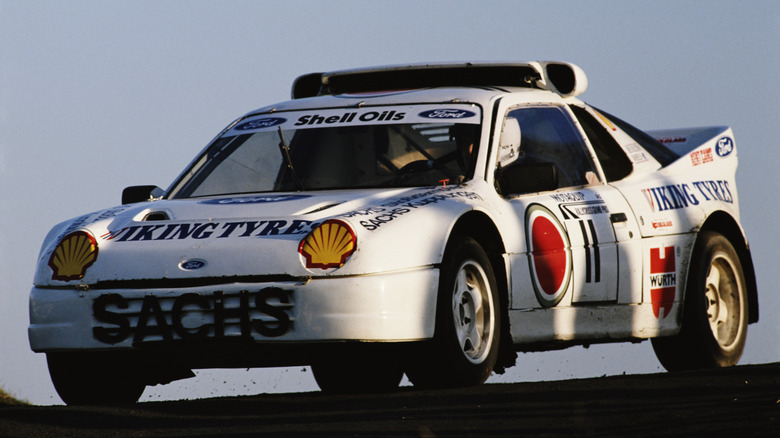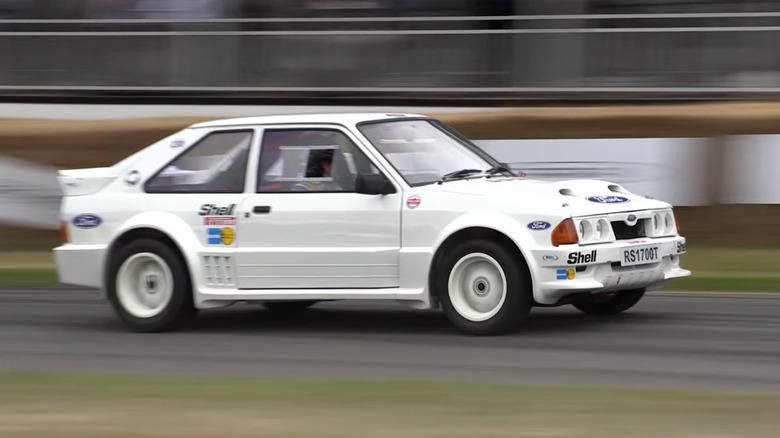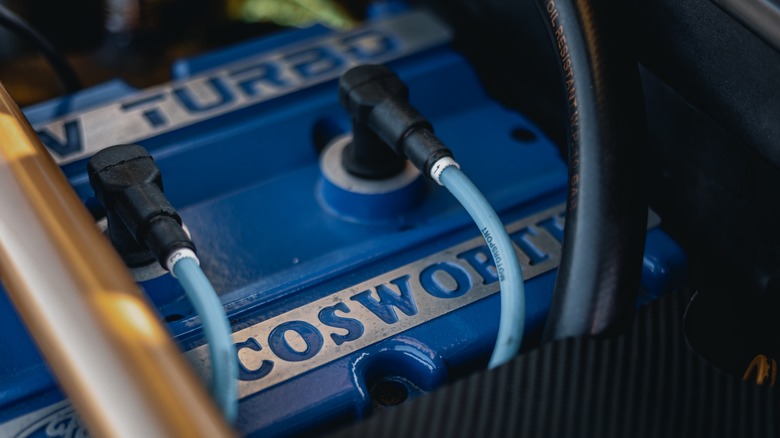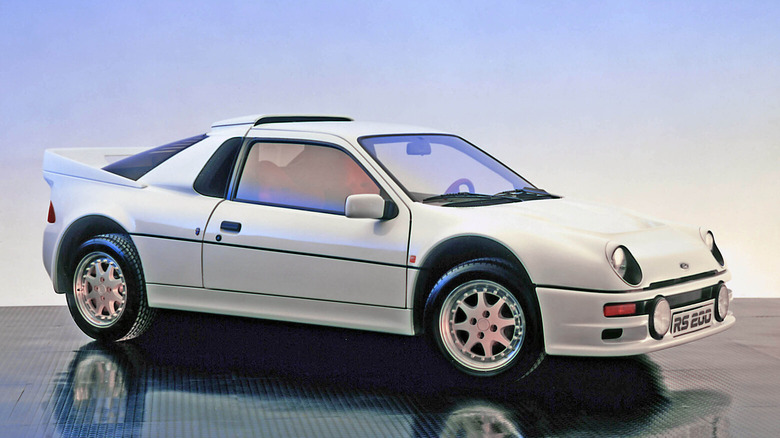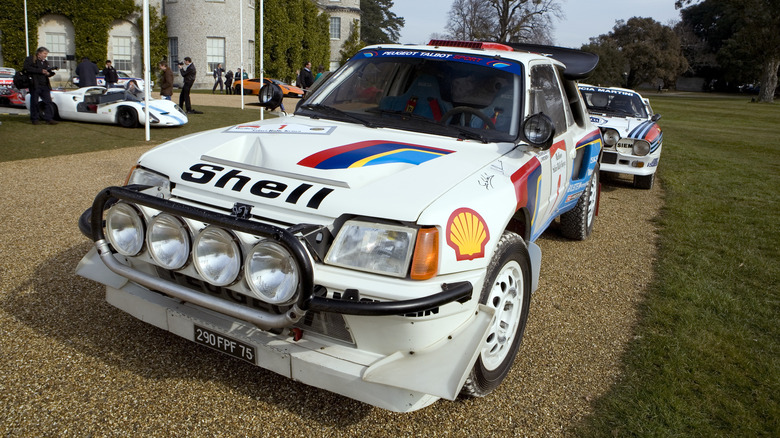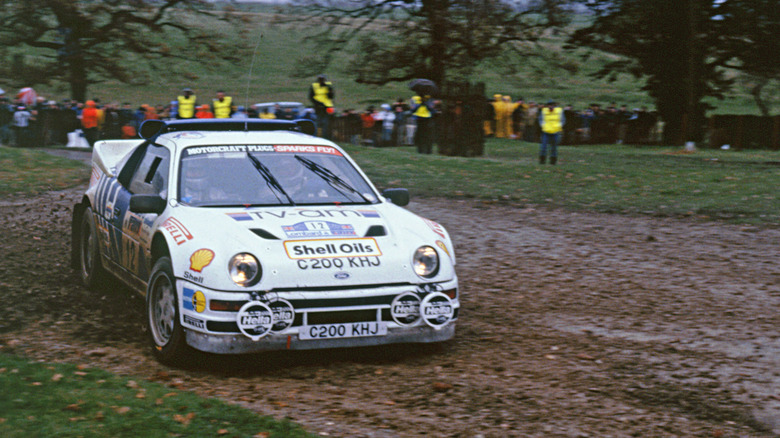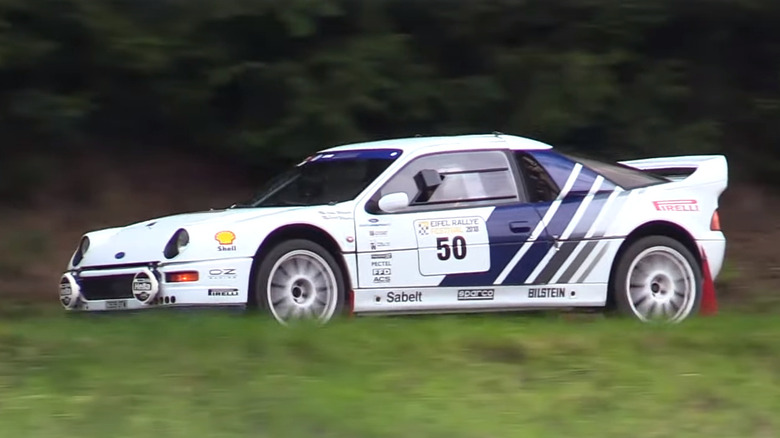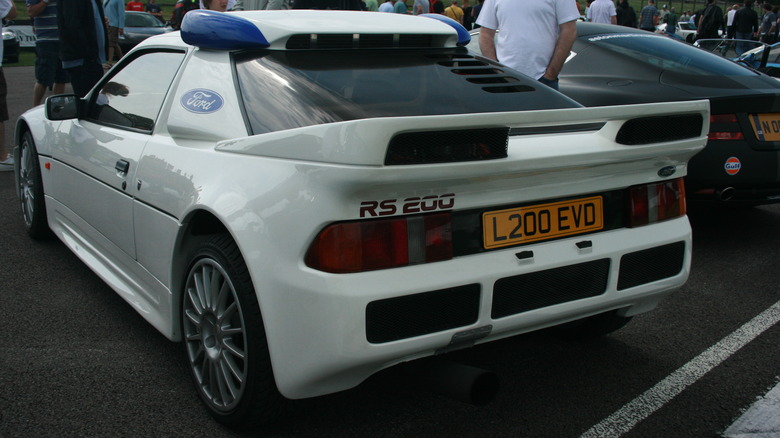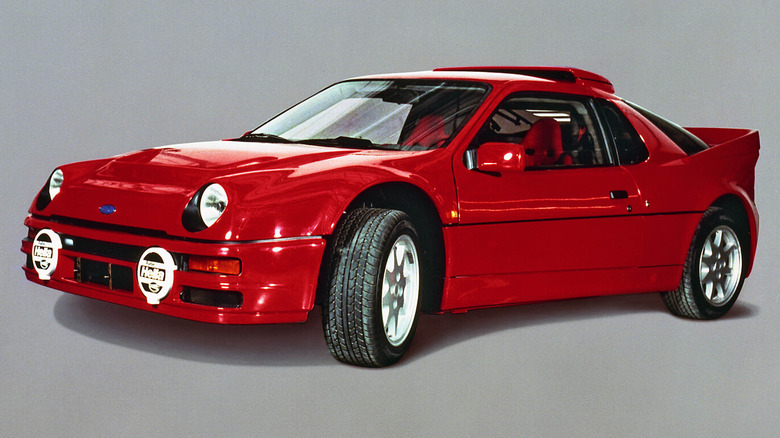The History Behind Ford's Legendary RS200 (And What Made It So Great)
Group B, the set of regulations previously used for GT vehicles in racing, is often synonymous with the "Golden Era" of rallying as it spawned a wave of cars that were gloriously overpowered, difficult to control, and thrilling to watch on stage. One of the most iconic cars of the era is the Ford RS200, a legendary rally car built from the ground up to be unlike anything else in the category. Ironically, the car wasn't much of an immediate success for Ford, as it never got the chance to show its full potential in competition, and road-going versions proved very slow to sell.
Nonetheless, looking back at the RS200 program, it perfectly encapsulates the madness that was the Group B era, even if it never racked up titles like Ford had hoped it would. Today, it's become a niche collectors' favorite, although examples rarely change hands. There's a good reason for that, as the RS200 represents a unique chapter of Ford's motorsport history, as well as being one of the wildest Group B cars ever conceived.
The successor to the forgotten Escort RS1700T
The RS200 would never have been created were it not for the last-minute axing of Ford's first attempt at a Group B car. The Escort RS1700T was based on the European Mk3 Escort, but was made significantly wider thanks to the development of a new body kit. Unlike the production Escort, the RS1700T was rear-wheel drive and came with one of two engines: a naturally aspirated Hart 2.3-liter inline-four, or a 1.8-liter turbo four-cylinder from Cosworth.
To meet Group B regulations, 200 examples were planned for production, and defending rally champion Ari Vatanen was dispatched to Portugal to further test the car. Although the results were initially promising, starting production of the road-going examples proved to be tricky, leading to significant delays. Nearly a full year passed before the Escort was eventually scrapped, as new management had deemed it to be uncompetitive with the slew of new Group B cars that debuted in the time since it was first developed. They came up with a radical solution: start again on a Group B car, but this time build it from the ground up rather than base it on a production model. As a result, the development of the RS200 began.
Powered by a 1.8-liter Cosworth engine
Abandoning the Escort RS1700T meant ditching many of the parts that had already been ordered for its production run, but it wasn't a complete loss. The 1.8-liter Cosworth engine that was originally picked for the Escort ended up being used in the RS200, and was mid-mounted for optimal weight distribution. The engine was, however, significantly modified to produce more power, with the 1986 RS200 brochure claiming it made around 420 horsepower in race-ready form. Customer cars were detuned to around 250 horsepower.
It also featured a new four-wheel drive system that split torque 37:63 between the front and back wheels by default, but it was adjustable and could be switched to rear-wheel drive for tarmac rallies. Ferguson Formula Developments, now known as Ricardo, were chosen to develop the cutting-edge system. The double wishbone suspension was also innovative, with twin dampers and full adjustability for every corner.
Designed by Ford, built by Reliant
It might have worn a Ford badge, but customer versions of the RS200 were actually built by Reliant. Ford was struggling to find the capacity to get all 200 examples ready in time, sub-contracting out the customer cars, while building competition versions in-house at its facility in Boreham, England. In theory, Reliant was a solid candidate for the job — the automaker had experience building cars from similar materials, and was located only a few hours' drive from Ford's facility.
In practice, Reliant's build quality was far below what Ford had expected, especially since each car was built as quickly as possible. Evo notes that, after the initial homologation process was complete, Ford ended up rebuilding many of the customer cars at its own factory, as they were essentially unsellable in their original condition. They weren't cheap either, with retail prices around £50,000 ($61,215.75 today), which back then was entry-level supercar money.
Tough competition
While the works cars were not quite so shoddily made, build quality was still less than ideal, which proved to be a problem considering the competition the RS200 had to compete against by the time it reached the start line. The Lancia Delta S4, homologated in 1985, quickly proved to be a formidable force, taking first and second on its maiden WRC appearance, while Peugeot's 205 T16 and its various "Evo" forms would eventually take the 1985 and 1986 drivers' titles with Finnish drivers Timo Salonen and Juha Kankkunen at the helm.
Audi was also a persistent leading force in the competition — although early testing of the Escort RS1700T had shown it to be faster than the Audi Quattro, by the time the RS200 was unveiled the Audi had racked up multiple constructors' and drivers' championship wins. Other manufacturers also had the advantage of being in the first or second "evolution" of their respective rally cars, whereas Ford had not entered a factory-backed car for half a decade until the RS200 was homologated.
An unfortunate Group B career
While Ford's lack of race experience put the team on its back foot, the RS200 did prove it had the pace to match the leaders, at least very briefly. At the start of the 1986 season, the RS200 managed a third-place finish thanks to the driving talents of Kalle Grundel. Two works cars also led the 1986 Acropolis Rally in Greece before both were promptly forced to retire with reliability issues. However, the whole season was overshadowed by a string of fatal crashes, one of which involved the RS200.
At Rally Portugal, Ford driver Joaquim Santos lost control of his car and veered off the road, hitting a group of spectators, killing three instantly and injuring over thirty more. First-hand accounts claim that, despite the car being notoriously difficult to drive, it was Santos' last-second swerve to avoid a spectator in the road that had initially caused the loss of control. All factory drivers pulled out of the rally in light of the tragedy, but it would take several more events and the deaths of Henri Toivonen and Sergio Cresto before Group B was banned altogether for 1987. With that, the RS200's top-flight rally career was unceremoniously cut short.
Abandoned Group S efforts
The 1987 season saw WRC entries limited to less powerful Group A cars, which left another RS200 variant as a stillborn project. The Group S rules were originally supposed to debut for the '87 season, but the idea was axed shortly after Group B. Ford tried to get ahead of its rivals and already started development work on a Group S RS200 by that time, but the work was ultimately for naught.
Group S was planned to form a middle ground between the wild prototype designs of the Group B cars and the more humble production-based Group A cars: it would take the looks and tech of the former, and the engines of the latter. With the regulations scrapped, the project was abandoned, although Ford's chief rally engineer John Wheeler eventually built a one-off version that occasionally makes appearances at heritage events and rallies around Europe.
The RS200 Evolution
After its rally career ended, Ford was left with a bunch of unsold RS200 chassis and nothing to do with them. The decision was made to kit them out in "Evolution" spec, boring out the engine up to 2.1-liter from 1.8-liter to add even more boost. Horsepower outputs vary from car to car, but each of the 24 units made can easily produce 600 horsepower. Bodywork and chassis components remained unchanged from the original car, although being motorsport machines, some owners made their own tweaks. Many of those owners used them for rallycross, where Group B cars were still permitted.
In fact, the RS200 went on to have a successful career in rallycross, eventually clinching the 1991 title with the legendary Martin Schanche behind the wheel. As the rarest and most powerful variant, Evo versions of the RS200 also command a higher premium among collectors, although they only very rarely change hands.
[Featured image by Supermac1961 via Wikimedia Commons | Cropped and scaled | CC BY 2.0]
Appreciated in retrospect
They might be seen as rallying icons today, but Ford struggled to sell customer cars in the years after Group B was axed. Perhaps this was due to the high asking price, the poor build quality, or the fact the car was ineligible for most major motorsport events. Perhaps it was a combination of all three. The last car reportedly left the factory in 1994, eight years after the RS200 first hit rally stages. In the years since, its value has appreciated far above its original asking price.
Prices for the RS200 vary by territory, with data from auction tracking site Glenmarch showing the U.S. to be where prices are consistently highest. Prices in the UK, where the car was originally developed and built, are considerably lower, with values in the region of £250-300,000 (around $305-365,000 at current exchange rates). American buyers will have to shell out north of $500,000 to get an American-titled example. Values have remained static for several years, meaning that anyone looking to score a bargain example of Ford's most outlandish rally car is almost certainly too late.
